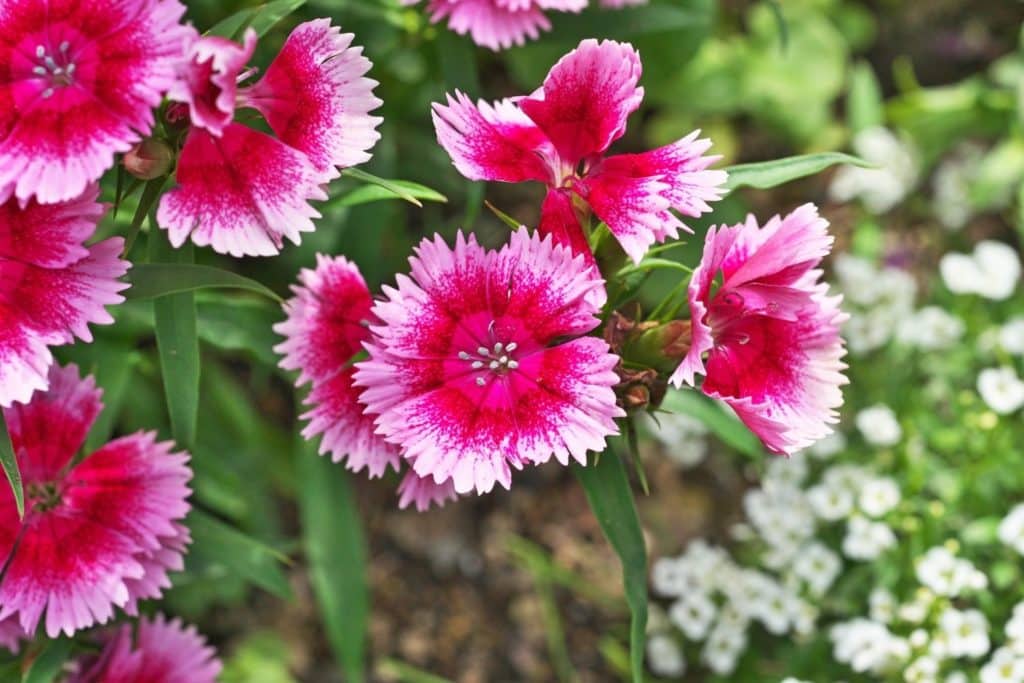
Are Dianthus plants poisonous to dogs?
The dianthus flowers are bright and attractive, but if ingested, they are poisonous. When dogs or people eat the flower, they experience gastric upsets, skin irritations, and diarrhea. Human beings only become sick from eating the leaves; however, dogs react to every part of the plant.
Some types of Dianthus are poisonous to dogs, while others are not. To determine whether or not a particular type of Dianthus is poisonous to dogs, it is important to consider both the flowers and the leaves.
If you are unsure whether or not a particular type of Dianthus is poisonous to your dog, contact your veterinarian for more information.
Let’s look into depth Are Dianthus Poisonous To Dogs?
Trying to find the best dog lover gifts for him? Check out our top five picks, perfect for any occasion!
Features of The Dianthus Plant
The flower of Dianthus caryophyllus is a perennial blooming plant found in gardens and bouquets throughout the world, especially during the summer. It may be cultivated as annuals and biennials. Some are short subshrub with woody base stems.
The garden carnation is a beautiful, bright-colored bloom with a distinctive scent. It comes from Europe and is often known as wild carnation, pinks, or sweet William.
The flower stalks of dianthus caryophyllus have very thin, linear foliage that measures about 4 to 6 inches long. Its five-parted blooms are pink-lilac, white, or pink-purple with picotee margins.
Symptoms of Dianthus Poisoning on Dogs
The following are signs of dianthus poisoning:
- Skin itching
- Diarrhea
- Skin irritation
- Vomiting
- Lack of appetite
- Redness of mucous membrane
- Abdominal pain
How Do You Treat Dianthus Poisoning in Dogs?
If your pet exhibits any dianthus plant poisoning symptoms, it’s best to see a veterinarian. To induce vomiting and remove any remaining plant particles from the dog’s stomach, the doctor may apply a soothing medicinal cream or ointment to the inflamed areas.
Fluid therapy is another option for removing the poison. Unfortunately, it also prevents your dog from dehydrating, possibly owing to a lot of diarrhea and vomiting.
Fluid therapy can also be administered via an intravenous line. After that, clean the dog’s body to prevent any further discomfort.
Home Remedy and First Aid to Dianthus Poisoning in Dogs
Most dianthus poisoning can be treated at home. Rinse and flush your dog’s mouth with water once you’ve discovered he ate the plant. Any remaining plant components will be removed during this rinsing and flushing process.
Giving your dog an emetic like one teaspoon of hydrogen peroxide (3%) orally may induce vomiting. Rinse and flush the mouth again with water to remove any irritant vomitus or potential toxin after vomiting.
In most situations, a dog will be completely healed in 4-24 hours after ingesting poisonous plants.
If the dog’s airway is obstructed due to edema, keep an eye on them at the veterinarian’s office. This monitoring should continue until the swelling subsides and breathing has resumed. Then make sure you avoid ingesting any more dianthus plants in the future.
Dianthus In Homes with Pets
Before you bring that dianthus plant into your home, you may want to know if it’s poisonous to dogs. Believe it or not, some types of dianthus plants are toxic to our furry friends and can cause serious health problems.
Pets usually try to taste everything that comes their way. Dogs may find the brightly colored blossoms exciting and pleasant-smelling, so they can be more likely to eat them if on a walk through a garden.
Ingesting dianthus plants might cause anything from mild stomach upset to serious poisoning in some cases.
Focus on Pet-Friendly Gardens and Homes
While the outdoor environment is great for pets, it’s important to be aware of toxic plants. All dogs and cats may ingest poisonous plants, but some certain breeds and age groups are more sensitive than others.
Dogs: If your dog has dug up a dianthus plant in your garden or chewed on its foliage, keep an eye out for the following symptoms:
Dianthus plants are toxic. If your dog eats even a single part of the petals or leaves, they may begin vomiting or have loose stools within 2 to 4 hours after ingestion.
Some types of dianthus plants are poisonous to dogs. These include carnations, pinks (Dianthus), and sweet William.
Here is a list of flowers that are toxic to cats and dogs:
- Lilies (particularly Easter, Day, Asiatic hybrids)
- Azaleas
- Tulips
- Rhododendrons
- Oleander
- Tobacco plant leaf
To educate dog owners we recently added new resources like Doberman ear cropping, how to do it at home, and the right age to crop ear of Doberman.
Conclusion:
Whether you have a dog that likes to chew on plants or just looking to be aware of any potential dangers, it’s important to know about the types of dianthus plants that can be poisonous.
In most cases, if your pet ingests even a small amount of one of these plants, they will experience gastrointestinal distress. If your pet has eaten a dianthus plant, rinse their mouth out with water and call your veterinarian.
There may also be instances where you need to seek emergency veterinary care. By being proactive and keeping an eye out for these telltale signs, you can help keep your furry friend safe and healthy.
